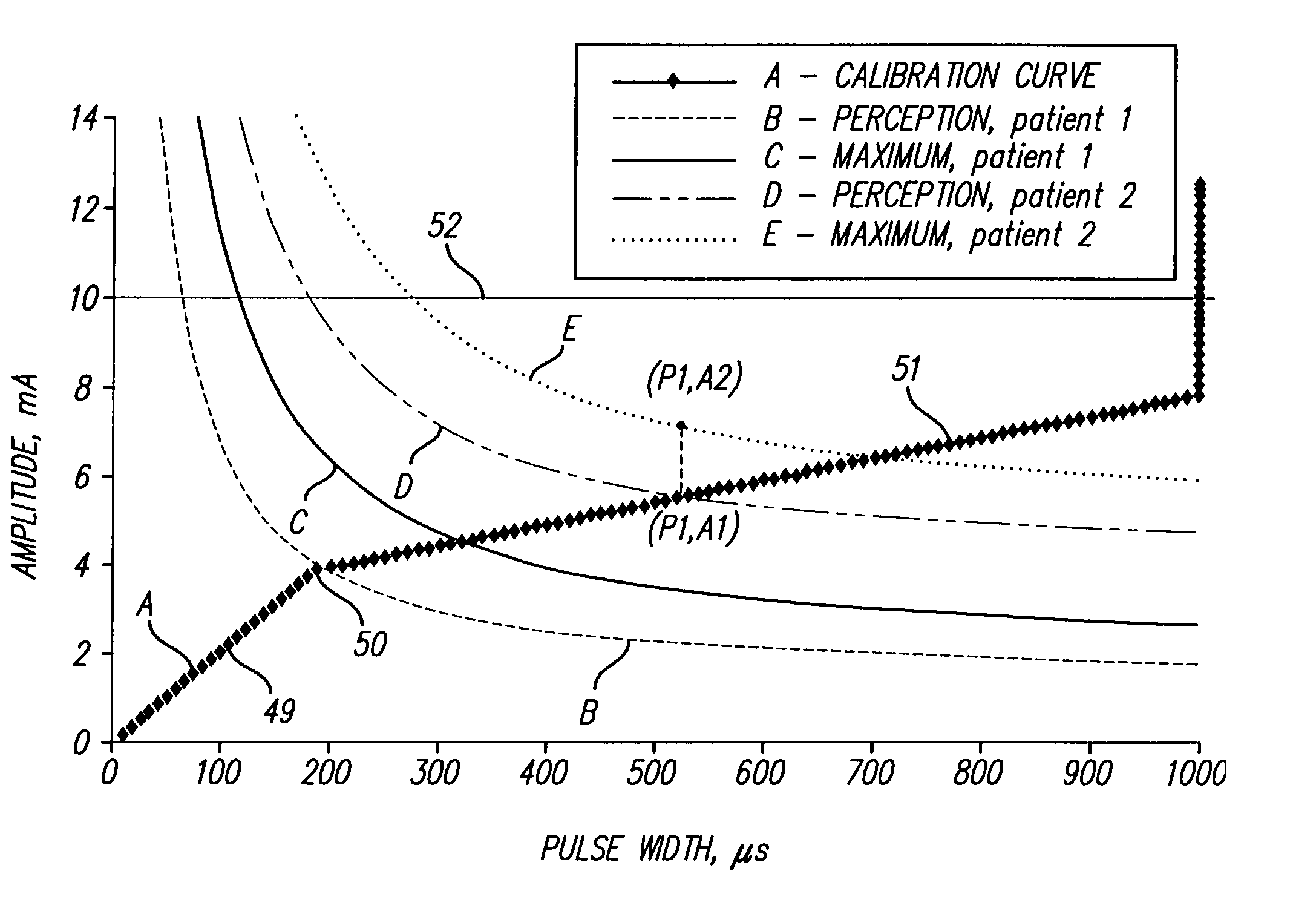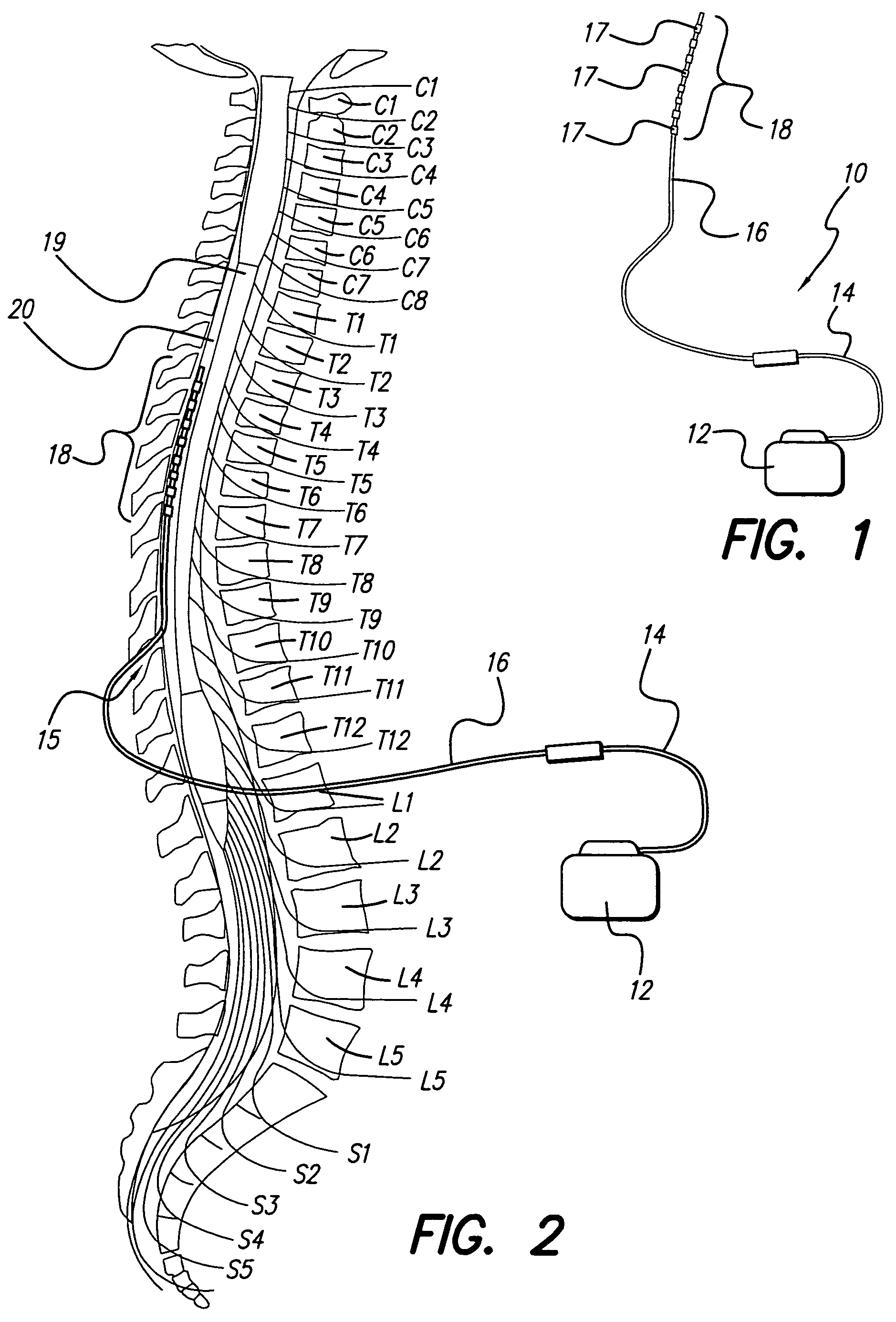Method for determining stimulation parameters
a stimulation parameter and parameter technology, applied in the field of stimulation nerve parameters, can solve the problems of not always being able to detect depolarization of a single nerve fiber, discrete amplitude steps of a stimulator may provide too great an effect, and voltage limitation effect, and achieve the effect of efficient determination of stimulus pulsewidth
- Summary
- Abstract
- Description
- Claims
- Application Information
AI Technical Summary
Benefits of technology
Problems solved by technology
Method used
Image
Examples
Embodiment Construction
[0027]The following description is of the best mode presently contemplated for carrying out the invention. This description is not to be taken in a limiting sense, but is made merely for the purpose of describing the general principles of the invention. The scope of the invention should be determined with reference to the claims.
[0028]The present invention provides a method for quickly determining the optimal pulsewidth and amplitude parameters of a stimulus pulse. These stimulus parameters are then used thereafter by the stimulation system to provide therapy, e.g., to treat chronic pain with the found stimulus pulsewidth and amplitude. One embodiment of the invention selects a stimulus pulsewidth and amplitude that maximizes the UR of the stimulator, while staying within the bounds of the maximum system compliance voltage. While the present invention, as discussed herein, applies particularly to spinal cord stimulation for masking pain (paresthesia), the method of the present inven...
PUM
 Login to View More
Login to View More Abstract
Description
Claims
Application Information
 Login to View More
Login to View More - R&D
- Intellectual Property
- Life Sciences
- Materials
- Tech Scout
- Unparalleled Data Quality
- Higher Quality Content
- 60% Fewer Hallucinations
Browse by: Latest US Patents, China's latest patents, Technical Efficacy Thesaurus, Application Domain, Technology Topic, Popular Technical Reports.
© 2025 PatSnap. All rights reserved.Legal|Privacy policy|Modern Slavery Act Transparency Statement|Sitemap|About US| Contact US: help@patsnap.com



